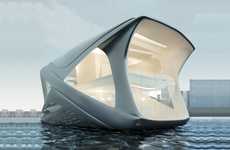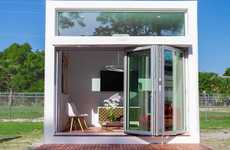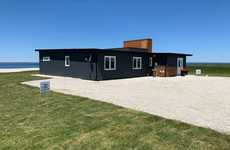



Prefabricated homes are being designed with climate and natural disasters in mind
Trend - Prefab residences are now being designed to account for the consequences of climate change and natural disasters, with everything from designs that accommodate flooding to those that are earthquake-proof.
Insight - Consumers around the world are increasingly aware of how climate change will affect weather patterns in the future. Because of this, many are choosing to invest in both micro and macro solutions that both lessen their personal impact on the environment, and that might protect them from some of the consequences of climate change in the future.
Insight - Consumers around the world are increasingly aware of how climate change will affect weather patterns in the future. Because of this, many are choosing to invest in both micro and macro solutions that both lessen their personal impact on the environment, and that might protect them from some of the consequences of climate change in the future.
Workshop Question - How is your brand prioritizing both short and long-term solutions to climate change?
Trend Themes
1. Adapted Prefabricated Residences - Prefabricated residences are being designed to account for the consequences of climate change and natural disasters such as flooding and earthquakes.
2. DIY Pandemic Shelters - There is an increasing need for disaster relief solutions that can be easily assembled by individuals or organizations such as the pandemic shelter kit.
3. Software-defined Homes - The focus on smart homes is shifting towards software-defined homes that use 84% less energy than traditional homes and actively fight climate change.
Industry Implications
1. Architecture and Construction - The adaptation of prefabricated structures to accommodate natural disasters and climate change is a promising field for architects and constructors.
2. Disaster Relief Organizations - DIY disaster relief solutions such as the pandemic shelter kits can offer effective short-term solution to relief organizations in the face of natural or humanitarian disasters.
3. Renewable Energy - The development of self-powered software-defined homes that rely on solar panels and batteries to reduce carbon footprint are shaping the renewable energy sector.
5 Featured, 43 Examples:
351,842 Total Clicks
Date Range:
Mar 19 — Mar 21
Trending:
V. Hot
Consumer Insight Topics:












































